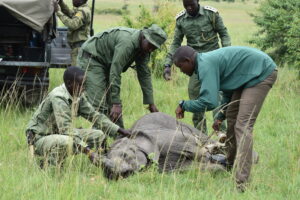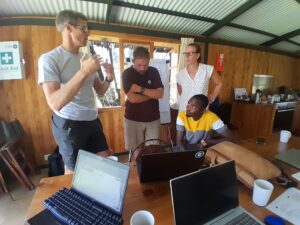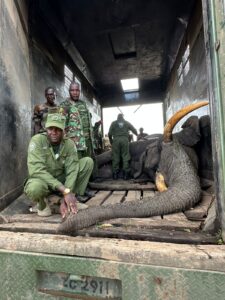Mara Elephant Project’s approach of collaring, monitoring and researching elephants is a key component to ensuring we meet our mission objectives and continue to see results. Currently, MEP has 23 collared elephants that we monitor via Google Earth daily. MEP’s 23 collared elephants provide data that is being used daily to mitigate human-elephant conflict, inform ranger deployment and anti-poaching work, and promote transboundary cooperation within the wider ecosystem. The collar software also includes alarms for immobility, geo-fence breaches and streaks (when an elephant moves quickly potentially signifying it is in danger) which MEP reacts to at a moment’s notice.

Collared elephant Chelsea.
The downside of the elephant collars is that they only last three years and are expensive to replace. The cost to cover the collaring of an elephant and the monitoring of the collar for the lifespan of three years is $26,000. This figure includes a new elephant collar ($3,000), deployment of that collar ($1,500) and monitoring by rangers using vehicles, monthly aerial monitoring in the Karen Blixen Camp Ree Park Safari helicopter and data download fees, which amounts to $7,200 for every year that the collar is operational.
 In 2018 alone, MEP must replace 10 collars on Kegol (pictured left), Chelsea, Limo, Caroline, Naibosho, Shorty, Hugo, Fred, Tressa, and Alina because their lifespan is up. In addition to these 10 replacements, we’ll need to replace collars on two elephants including Lucy and Nkoidilla whose were recently lost. We also want to collar three new elephants in 2018. One in poaching hotspot Loita Hills and two in the Mau Forest. This brings us to a total of 15 collars that MEP needs to raise money to support in 2018!
In 2018 alone, MEP must replace 10 collars on Kegol (pictured left), Chelsea, Limo, Caroline, Naibosho, Shorty, Hugo, Fred, Tressa, and Alina because their lifespan is up. In addition to these 10 replacements, we’ll need to replace collars on two elephants including Lucy and Nkoidilla whose were recently lost. We also want to collar three new elephants in 2018. One in poaching hotspot Loita Hills and two in the Mau Forest. This brings us to a total of 15 collars that MEP needs to raise money to support in 2018!
Expanding our elephant collaring program is essential to MEP’s success. We focus on candidates that will gather useful spatial data meaning elephants in border areas, areas of conflict or areas outside conservancies or national reserves. We are also looking for candidates that represent crop raiding elephants identified across the dispersal area and candidates that represent large herds. The collared elephants in most cases represents a whole herd that may be at risk.

MEP supporter Karsten Ree helping to collar Mytene.
The monitoring of elephants and supporting that aspect of MEP’s operations is equally as important. Through all of this monitoring, MEP generates monthly tracking reports, constructs density and movement maps, with partner Save the Elephants, and populates a shared geo-fence database. Each day coordinates are sent to ground patrols who use these to check on the elephants. Depending on the satellite image quality, it is possible to see settlements near the collared elephant. This information is used to anticipate possible human-elephant conflict incidents and intervene before it occurs. Though the aerial monitoring program we have identified that the 23 collared represent between 400 and 600 elephants, as counted each month.
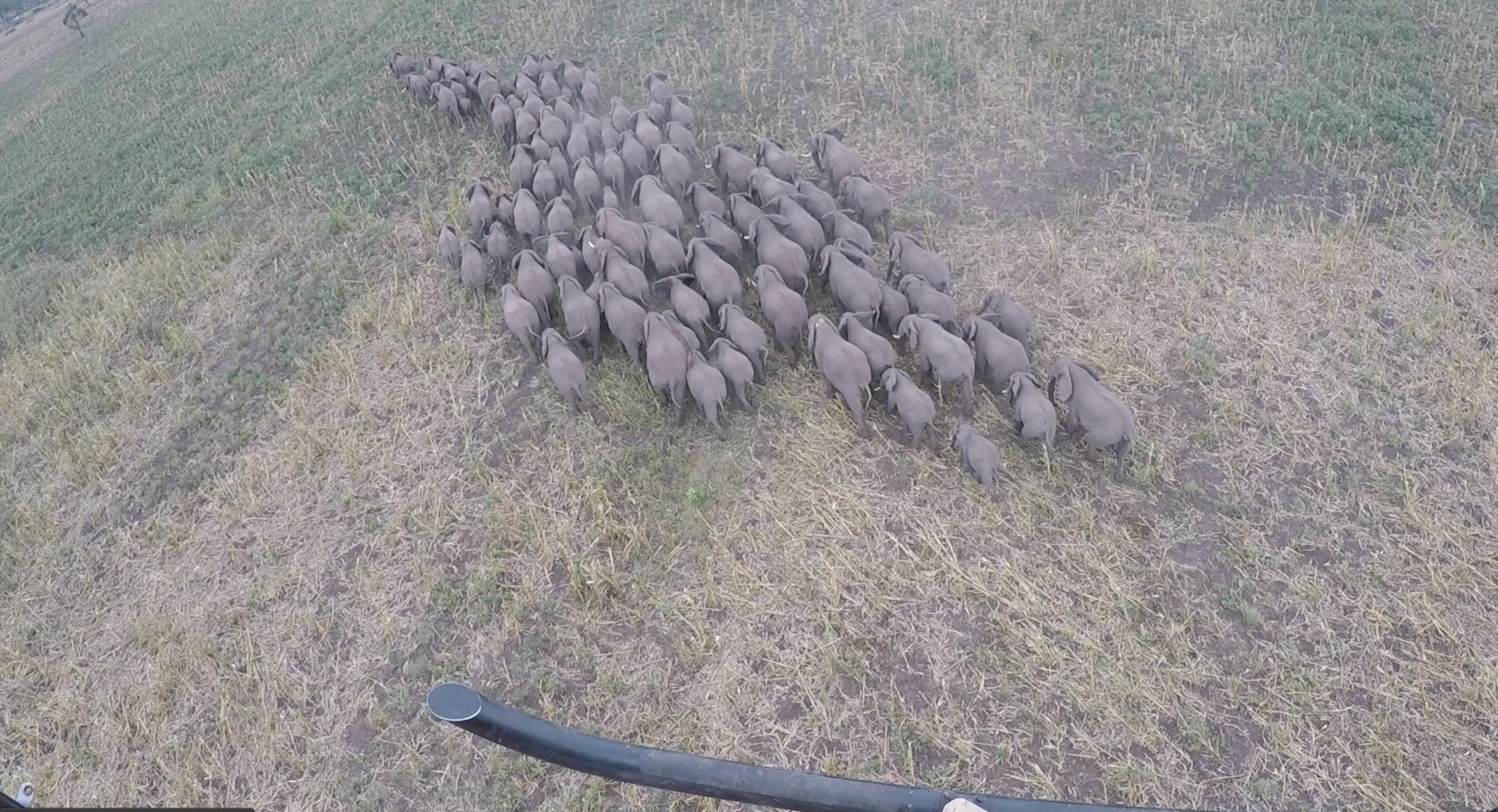
A herd spotted from the air while on a monitoring mission.
The data collected from MEP’s elephant collars is the single best indicator for identifying elephant density hotspots (see example map below), defining corridors, and illustrating elephant movements to target audiences. Combined data from a sample number of elephant collars spread across the elephant population present an accurate extent of the current elephant rangeland. The ongoing collection of data and further analysis must continue to provide the evidence underpinning the communications and advocacy efforts of the organization to protect this critical habitat into the future.
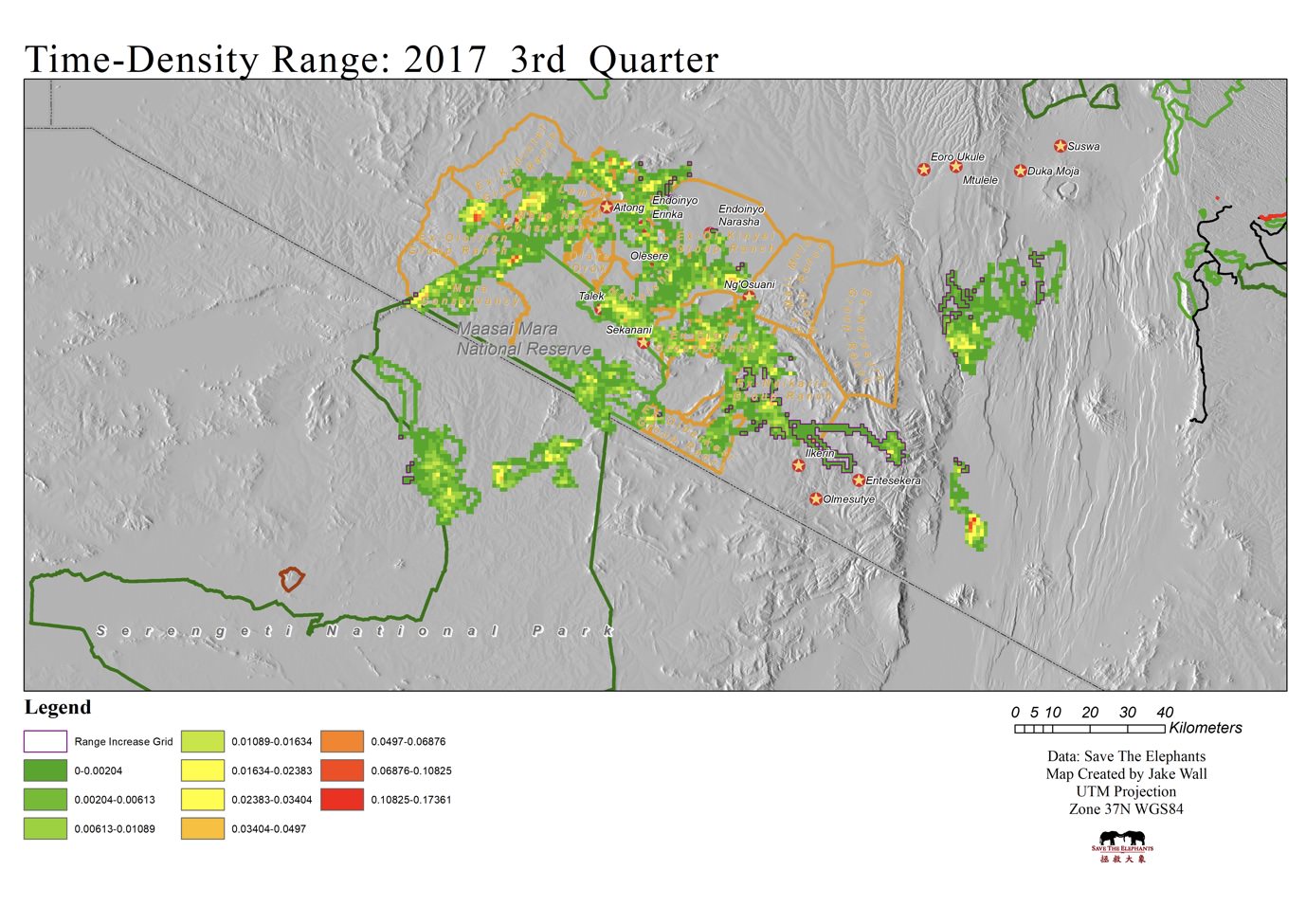
MEP is interested in working with any interested supporters to expand our collaring program. We would appreciate any level of support you can give to this essential approach.
If you’re interested in supporting the collaring, monitoring and data collection of an elephant, please email Claire Bolles for more information.
